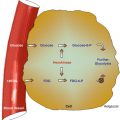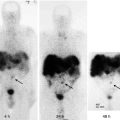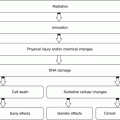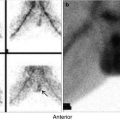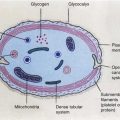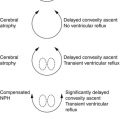(1)
Department of Nuclear Medicine, Kuwait University, Safat, Kuwait
1.1 Introduction
1.2 Pathology
1.3.1 Homeostasis
1.3.2 The Genome
1.4 Physiology
1.5 Pathophysiology
1.6.1 Cell Injury
Abstract
Understanding the pathophysiology of disease is essential for all who study and work in any field of medicine. Since nuclear medicine deals with functional and molecular changes, it becomes crucial to understand the pathophysiological changes of relevant diseases and disease-like conditions to properly study and practice the field.
1.1 Introduction
Understanding the pathophysiology of disease is essential for all who study and work in any field of medicine. Since nuclear medicine deals with functional and molecular changes, it becomes crucial to understand the pathophysiological changes of relevant diseases and disease-like conditions to properly study and practice the field.
Pathophysiology has been changing and expanding with added new knowledge. Since the late 1970s, tremendous developments in molecular biology and genetics have provided medical science with an unprecedented chance to understand the molecular basis of disease. Disease can now be defined on the basis of abnormal deviation from normal regional biochemistry. Since pathophysiology is a bridge between pathology and physiology, it is imperative to understand the principles of both disciplines.
1.2 Pathology
Pathology is concerned with the study of the nature of disease, including its causes, development, and consequences with emphasis on the structural changes of diseases. Specifically, pathology describes the origin of disease, its etiologies, and how it progresses and manifests clinically in individuals in order to determine its treatment. Pathology plays a vital role across all facets of medicine throughout life, and currently it extends to the examination of molecules within organs, tissues, or body fluids.
1.3 Definition of Disease
The precise definition of disease is as complex as an exact definition of life. It may be relatively easier to define disease at a cellular and molecular level than at the level of an individual. Throughout the history of medicine, two main concepts of disease have predominated: ontological and physiological [1].
The ontological concept views a disease as an entity that is independent and self-sufficient and runs a regular course with a natural history of its own. The physiological concept, on the other hand, defines disease as a deviation from normal physiology or biochemistry; the disease is a statistically defined deviation of one or more functions from those of healthy people under circumstances as close as possible to those of a person of the same sex and age of the patient. Most diseases begin with cell injury, which occurs if the cell is unable to maintain homeostasis.
1.3.1 Homeostasis
The term homeostasis is used by physiologists to mean maintenance of static, or constant, conditions in the internal environment by means of positive and negative feedback of information. About 56 % of the adult human body is fluid. Most of the fluid is intracellular, and about one third is extracellular fluid that is in constant motion throughout the body and contains the ions (sodium, chloride, and bicarbonate) and nutrients (oxygen, glucose, fatty acids, and amino acids) needed by the cells to maintain life. Extracellular fluid was described as the internal environment of the body and hypothesized that the same biological processes that make life possible are also involved in disease [1]. As long as all the organs and tissues of the body perform functions that help to maintain homeostasis, the cells of the body continue to live and function properly [1].
1.3.2 The Genome
At birth, molecular blueprints collectively make up a person’s genome or genotype that will be translated into cellular structure and function. A single gene defect can lead to biochemical abnormalities that produce many different clinical manifestations of disease, or phenotypes, a process called pleiotropism. Many different gene abnormalities can result in the same clinical manifestations of disease—a process called genetic heterogeneity. Thus, diseases can be defined as abnormal processes as well as abnormalities in molecular concentrations of different biological markers, signaling molecules, and receptors.
1.4 Physiology
Physiology is the study of normal, healthy bodily function. It is concerned with the science of the mechanical, physical, bioelectrical, and biochemical functions of humans in good health, their organs, and the cells of which they are composed. It is a broad science which aims to understand the mechanisms of living, from the molecular basis of cell function to the integrated behavior of the whole body.
1.5 Pathophysiology
Pathophysiology is a convergence of pathology and physiology. It deals with the disruption of normal mechanical, physical, and biochemical functions, either caused by a disease or resulting from a disease or abnormal syndrome or condition that may not qualify to be called a disease and now includes the molecular mechanisms of disease. In the year 1839, Theodor Schwann discovered that all living organisms are made up of discrete cells [2]. In 1858, Rudolph Virchow observed that a disease could not be understood unless it were realized that the ultimate abnormality must lie in the cell. He correlated disease with cellular abnormalities as revealed by chemical stains, thereby founding the field of cellular pathology. He defined pathology as physiology with obstacles [2].
Since the time of Virchow, gross pathology and histopathology have been a foundation of the diagnostic process and the classification of disease. Traditionally, the four aspects of a disease process that form the core of pathology are etiology, pathogenesis, morphological changes, and clinical significance [3]. The altered cellular and tissue biology and all forms of loss of function of tissues and organs are ultimately the result of cell injury and cell death. Therefore, knowledge of the structural and functional reactions of cells and tissues to injurious agents, including genetic defects, is the key to understanding the disease process. Currently, diseases are defined and interpreted in molecular terms and not just as general descriptions of altered structure. Accordingly, pathology is evolving into a bridging discipline that involves both basic science and clinical practice and is devoted to the study of the structural and functional changes in cells, tissues, and organs that underlie disease [3]. The use of molecular, genetic, microbiological, immunological, and morphological techniques is helping us to understand both ontological and physiological causes of disease.
1.6 Basic Major Principles of Pathophysiology
1.6.1 Cell Injury
Cellular injury occurs if the cell is unable to maintain homeostasis. The causes of cellular injury may be hypoxia (oxygen deprivation), infection, or exposure to toxic chemicals. In addition, immunological reactions, genetic derangements, and nutritional imbalances may also cause cellular injury (Table 1.1). In hypoxia, glycolytic energy production may continue, but ischemia (loss of blood supply) compromises the availability of metabolic substrates and may injure tissues faster than hypoxia. Various types of cellular injury and their responses are summarized in v.
Table 1.1
Mechanisms of cellular injury
Hypoxic: most common |
Chemical |
Structural trauma |
Infectious
Stay updated, free articles. Join our Telegram channel
Full access? Get Clinical Tree
 Get Clinical Tree app for offline access
Get Clinical Tree app for offline access

|
